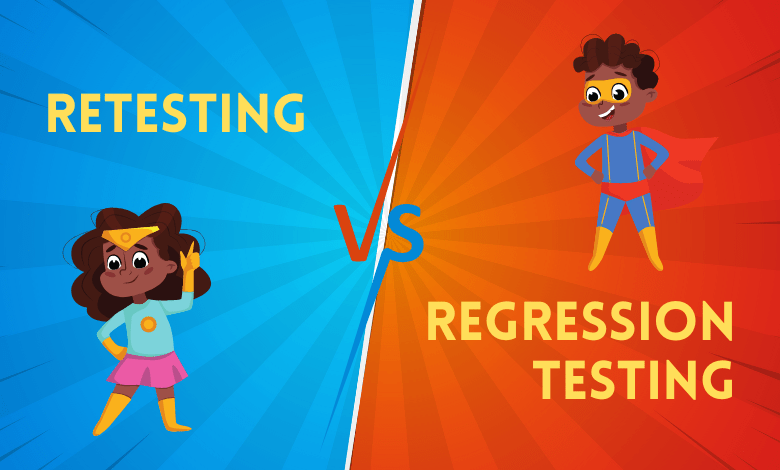What Is The Difference Between Retesting And Regression Testing?

Retesting and regression testing are two essential sorts of software testing that help preserve the dependability and calibre of software. Retesting entails testing the same set of functionalities or features that have already been tested in order to determine whether any issues or flaws have been resolved. Regression testing, on the other hand, entails testing the entire software system after modifications are done to ensure that no new defects or issues were introduced as a result of the changes. Retesting and regression testing are both essential processes in the software testing process since they ensure that the program satisfies the desired quality and performance criteria. They take place throughout the software development lifecycle at various phases.
Purpose:
Retesting’s primary objective is to ensure that any issues or flaws that were found and fixed during the initial testing have been addressed. Regression testing, on the other hand, is carried out to ensure that changes made to the program do not cause the appearance of new issues or faults.
Scope:
Specifically tested functionality or features are the focus of retesting. Regression testing, on the other hand, has a wider scope and covers the complete software system.
Timing:
Retesting is typically conducted after bugs or other issues have been identified and addressed. Regression testing, on the other hand, is frequently carried out following software updates.
Frequency:
Regression testing is done more frequently than retesting, which is typically done only once to make sure that modifications made to the product do not introduce new issues or bugs. Regression testing is carried out at every stage of the software development process.
Testing strategy:
To make sure that the issues or bugs have been fixed, retesting includes executing the same test cases that were previously executed. Regression testing, on the other hand, requires running new and modified test cases to ensure that software changes did not cause the appearance of brand-new issues.
Environment for testing:
Although retesting is frequently done in the same testing environment as the first testing, regression testing may require a distinct testing environment that represents the changes made to the product.
Test results:
Retesting employs the same test data as the first testing, whereas regression testing may require new or modified test data that accurately reflects the software changes made.
Test automation:
Retesting is easily automated because it involves running the same test cases repeatedly. Regression testing, on the other hand, necessitates more complex test automation scripts that take into account the software changes done.
Test priority:
Retesting is typically given a greater priority than regression testing because it focuses on ensuring that issues have been fixed. Regression testing, however, might not get as much attention as other types of testing, including functional testing.
Conclusion
Retesting and regression testing are two critical kinds of software testing that assist guarantee the dependability and quality of software programs. The usage of automated testing technologies like Opkey can speed up these testing procedures. By automating tedious, repetitive operations and offering real-time reporting and analytics to swiftly detect and fix problems, Opkey helps software teams do retest and regression testing effectively. Software teams can enhance the efficiency of their testing, quicken their release cycles, and ultimately provide their users with high-quality software products by utilizing Opkey’s power.
Visit www.wordplop.com website to read such informative content.






